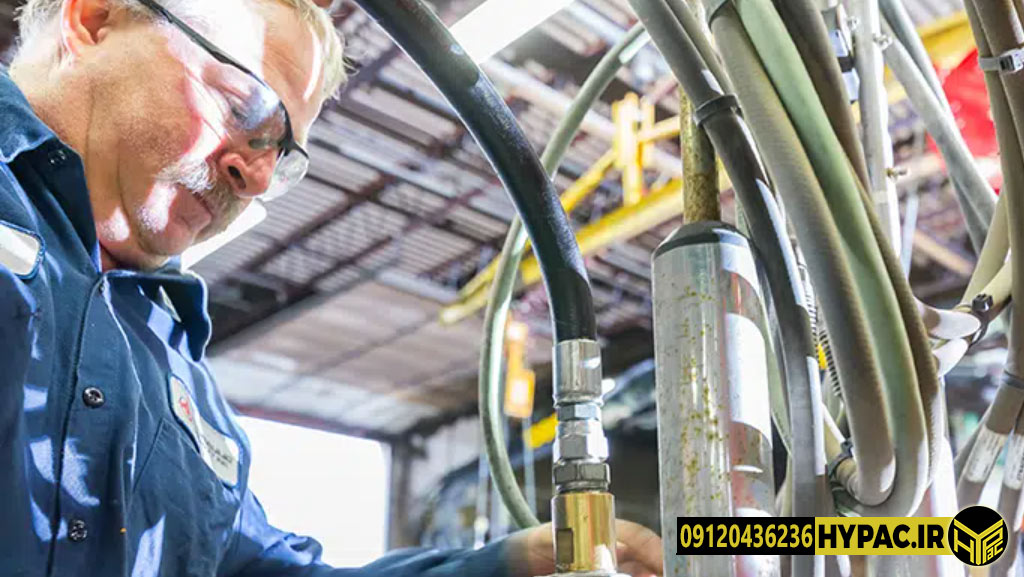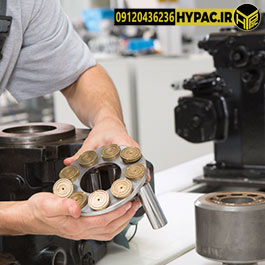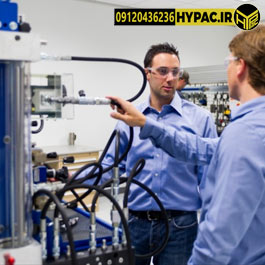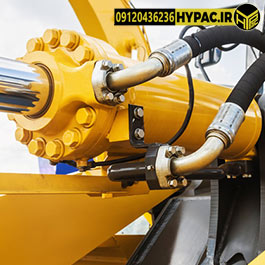Installation and Commissioning of Hydraulic Systems ــــ ⏱ 4 min read
Installing and commissioning hydraulic systems requires precision, adherence to technical and safety standards, and a thorough understanding of system components. Below is a streamlined guide to the process:

Key Installation Steps
1. Preparation
- Review Design Schematics: Ensure technical drawings match project requirements.
- Gather Components: Pumps, valves, cylinders, pipes, fittings, filters, and tools (torque wrenches, welding equipment).
- Inspect Installation Space: Ensure easy access for maintenance.
2. Installing Core Components
- Reservoir:
- Install below the pump to prevent cavitation.
- Connect inlet/outlet filters and add level/temperature sensors.
- Hydraulic Pump:
- Align and couple to the drive motor.
- Install a relief valve to prevent overpressure.
- Control Valves:
- Mount directional, pressure relief, and flow control valves per schematics.
- Use anti-vibration mounts.
- Actuators (Cylinders/Motors):
- Install cylinders with pivot joints to absorb lateral forces.
- Align motors with mechanical loads.
3. Piping and Connections
- Pipes: Use high-pressure stainless steel or hydraulic tubing.
- Cutting/Bending: Minimize fittings to reduce leaks.
- Fittings:
- Use appropriate O-rings and seals.
- Tighten to manufacturer-specified torque.
- Label Lines: Mark high-pressure, return, and drain lines.
4. Electrical and Control Setup
- Connect Motors: Link pumps to motors with overload protection.
- Wire Sensors: Pressure gauges, level sensors, and limit switches.
- Control System: Program PLCs or manual controls for pressure, flow, and timing.
5. Fluid Charging
- Select Fluid: Choose oil based on viscosity (e.g., ISO VG 46).
- Filter Oil: Use 10-micron filters during filling.
- Bleed Air: Open air vents in cylinders/pumps to remove bubbles.
Commissioning
1. Initial Testing
- Dry Test: Check pump rotation and component freedom.
- Low-Pressure Test: Run at 20-30% rated pressure to detect leaks.
- Flow Check: Ensure no blockages in pipes/filters.
2. Final Adjustments
- Set Relief Valves: Gradually increase pressure to design levels.
- Calibrate Sensors: Match outputs (e.g., 200 bar = 4-20mA signal).
- Actuator Test: Verify cylinder speed/force in both directions.
3. Full-Load Test
- Apply Load: Test under normal and 10-15% overload conditions.
- Monitor Parameters: Record temperature, pressure, and noise.
- Cooling Check: Ensure radiators/fans manage heat.
Safety Tips
- Wear PPE (gloves, goggles, safety shoes).
- Use lockout-tagout during maintenance.
- Avoid skin contact with hydraulic oil.
- Install high-pressure warning signs.
Common Post-Installation Issues
| Issue | Cause | Solution |
|---|---|---|
| Oil Leaks | Loose fittings or bad seals | Tighten fittings/replace seals. |
| Overheating | Low oil or dirty radiator | Refill oil/clean radiator. |
| Pump Failure | Cavitation or wear | Check oil level/replace pump. |
| Vibration/Noise | Air ingress/misalignment | Bleed air/realign components. |
Post-Commissioning Maintenance
- Regular Inspections: Check leaks, oil levels, and filters every 50 hours.
- Fluid/Filter Replacement: Follow manufacturer guidelines (every 1,000–2,000 hours).
- Operator Training: Teach staff to recognize warning signs (e.g., pressure drops).
Specialized Tools
- Hydraulic pressure testers.
- Endoscopes for pipe inspections.
- Vibration analyzers for alignment checks.
By following these steps and standards, your hydraulic system will deliver stable, safe, and cost-effective performance. For project-specific guidance, share detailed requirements! 🛠️



افزودن دیدگاه